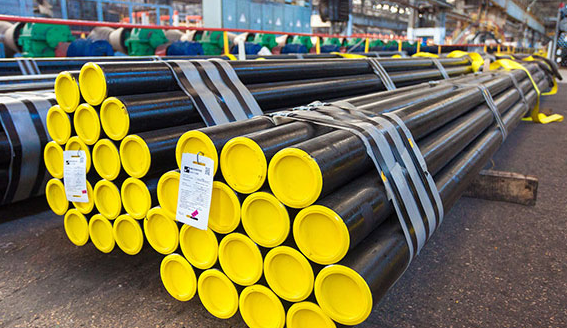
Heat Treatment Processes Seamless Pipe Manufacturers Use for Crafting Seamless Pipes
Heat treatment emerges as a fundamental process when it comes to the intricate art of producing seamless pipes. Seamless pipe manufacturers use various heat treatments to shape the characteristics and properties of these essential components.
Let us step into the world of heat treatment. Temperature, time, and controlled environments orchestrate the transformation of raw materials into durable and high-performance seamless pipes.
Raw material selection:
Creating seamless pipes starts with the careful selection of raw materials. Manufacturers usually use steel billets or solid cylindrical bars. These materials undergo meticulous scrutiny to ensure their quality and suitability for the heat treatment process. The raw materials’ composition, purity, and structural integrity lay the foundation for the subsequent heat treatment phases.
The essential phase of heating:
The first step in producing stainless steel seamless pipes is to heat the raw material to precise temperatures. For seamless pipes, this phase typically involves the use of high-temperature furnaces. Engineers heat the steel billets to temperatures that induce specific structural changes within the material. Hence, they often reach temperatures above 1,000 degrees Celsius.
Altering the structural properties:
As the steel reaches critical temperatures, it undergoes transformations that modify its microstructure. It is a crucial phase for achieving the desired mechanical properties, such as strength, toughness, and ductility. The controlled heating and cooling cycles during this stage influence the formation of crystal structures within stainless steel. It imparts unique characteristics to the eventual seamless pipes.
Quenching and cooling for precision:
Seamless tubes and pipes companies rapidly cool or quench the steel after it undergoes the controlled heating phase. It is a critical step that determines the final properties of the seamless pipes. Quenching involves rapidly cooling the heated steel using various mediums like water, oil, or air. The specific quenching method and speed greatly influence the steel’s hardness, resilience, and other mechanical properties.
Tempering for achieving desired properties
After quenching the steel pipes, manufacturers put the pipes through the tempering process. Tempering involves reheating the material to lower temperatures compared to the initial heating phase. Such controlled reheating reduces the brittleness that quenching induces. At the same time, it maintains the desired strength and toughness of the steel.
Inspection and testing before finalizing:
Stainless steel seamless pipes go through rigorous inspection and testing procedures after the heat treatment process ends. Manufacturers implement these tests to ensure the seamless pipes meet stringent quality standards. They employ non-destructive testing methods such as ultrasonic testing, radiography, and magnetic particle inspection. These methods detect any flaws or irregularities in the pipes’ structure. In case engineers find any faults, they either rectify them or discard the faulty conduits, depending on the defect.
Balancing precision and expertise:
Crafting seamless pipes through heat treatment is a scientific process and an art form that demands precision and expertise. The intricate control of temperatures, cooling rates, and time durations requires skilled metallurgists and specialized equipment. Manufacturers must be consistent and thorough with the heat treatment methods to acquire the desired properties in seamless conduits.
Enhancing performance through heat treatment:
Seamless pipe manufacturers heat-treat their products to ensure quality. Heat treatment is a cornerstone process, bestowing vital components with the required strength, durability, and resilience. The meticulous orchestration of heating, transformation, quenching, and tempering leads to seamless pipes that serve critical roles in various industries. Seamless pipes are the backbone of industries ranging from energy generation to infrastructure development. Heat treatment allows engineers to cater to vulnerable sectors that cannot compromise safety, precision, and quality.



